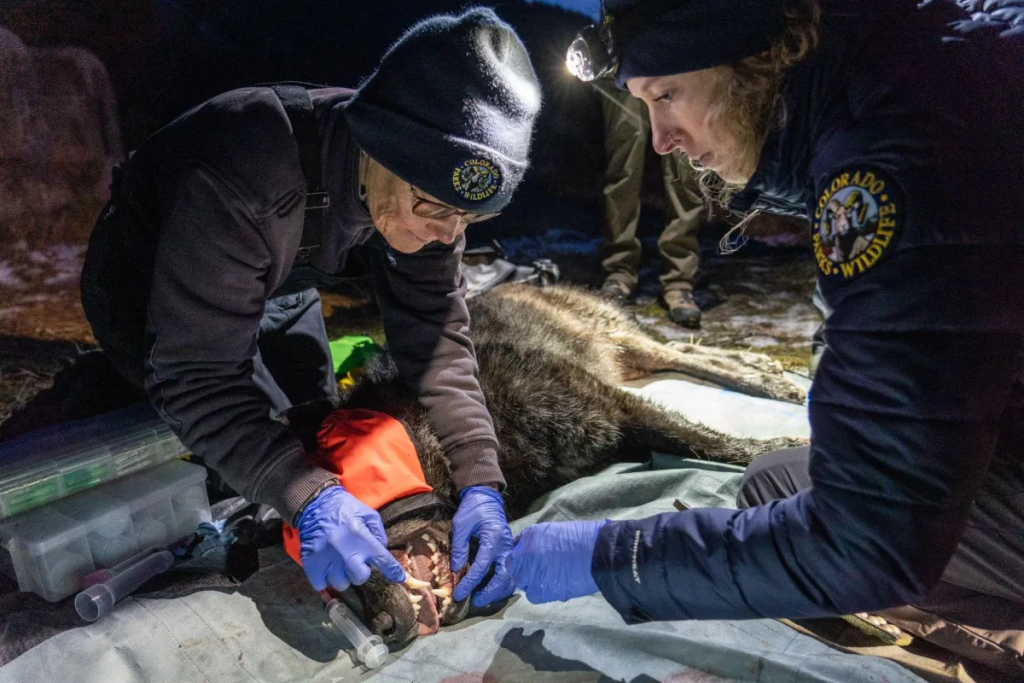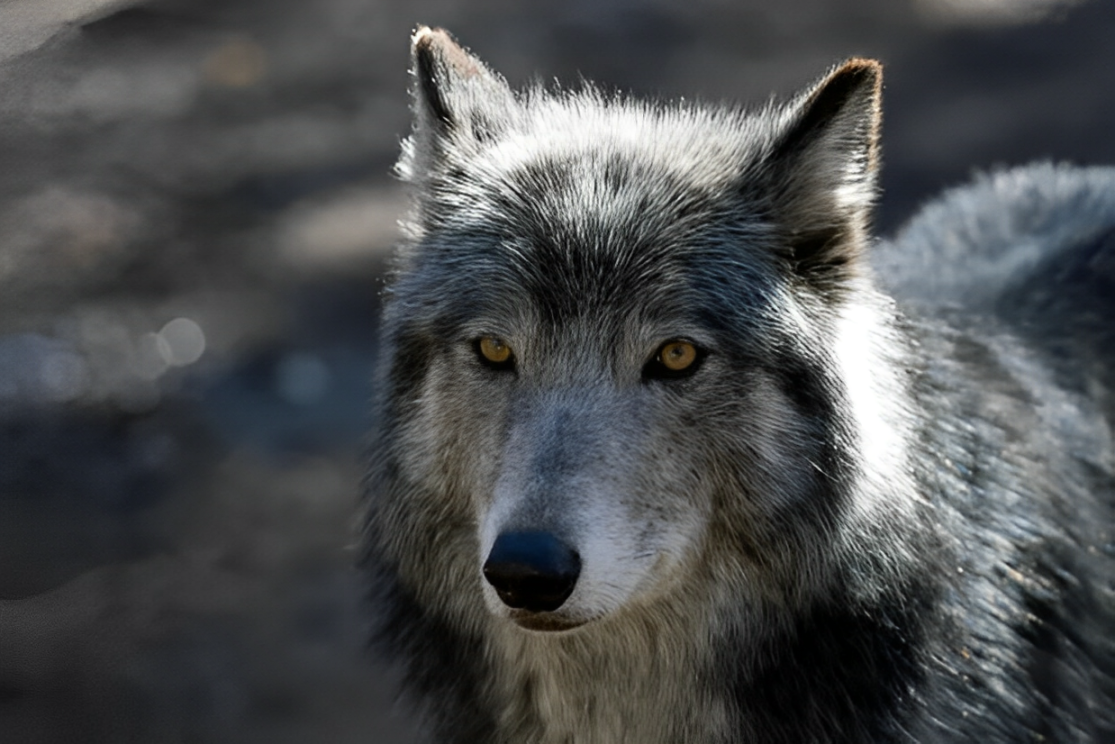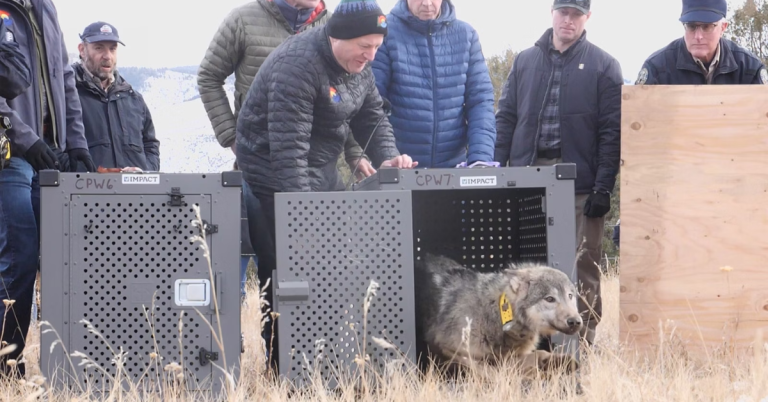Wolves from British Columbia have arrived in Colorado, and a Facebook group has taken it upon themselves to break the news. The reintroduction of gray wolves, part of the second phase of Colorado’s wolf reintroduction plan, has raised concerns among local ranchers and outfitters, who have been left in the dark about the exact release locations.
Commissioners in two out of three targeted counties were notified that the wolves had arrived. Still, the Colorado Parks and Wildlife (CPW) has yet to confirm where the animals are being released. This lack of transparency has led ranchers to take matters into their own hands.
Over the past week, members of a Facebook group called Colorado Wolf Tracker have used live flight tracking software to trace the movements of a plane they believed was carrying wolves to Colorado. They shared details about where they thought the wolves might be released, pointing to potential state-owned and private lands.
The group also followed CPW trucks from the Eagle County Regional Airport, where they had staked out, to wildlife areas where they suspected the wolves would be released. The ranchers argue that CPW’s lack of communication invited such scrutiny, and they feel they could have better prepared for the arrival of the new predators if they had been given proper notice.
Josh Wamboldt, a rancher and outfitter from Redstone, Colorado, expressed his frustrations. He said that if CPW had been clear about the release date and location, ranchers would have been better prepared. For instance, if CPW had announced that the wolves would be released at Garfield State Wildlife Area on January 13, with roads closed in advance to prevent public access, ranchers would have appreciated the warning.
But without such an announcement, Wamboldt’s parents found themselves at the Eagle County airport, hoping to figure out what was going on.
Wamboldt described seeing two CPW trucks with cages visible in the back, one of which was pulling an enclosed trailer. He also mentioned that a video captured by his father showed the trucks traveling through Glenwood Canyon, but no suspicious activity was noted by those following the trucks.

The last observation was made by someone who claimed to have seen private vehicles entering a CPW facility but noted that no vehicles carrying cages were left.
In Garfield County, which is one of the areas under consideration for wolf releases, officials have confirmed that no wolves have been released there. Perry Will, a former state senator and soon-to-be Garfield County commissioner, said that CPW had informed him that the British Columbia wolves were not released in Garfield County.
However, CPW declined to confirm or deny this information, citing the complexity of the operation and the need to ensure the safety of both the wolves and CPW employees. The agency promised to hold a news conference once the operation is completed, which could take up to two weeks.
Garfield County’s manager, Fred Jarman, also reported that CPW had assured the county that no wolves were being released in the area. However, the uncertainty surrounding the release locations has led to increasing speculation, with ranchers, county officials, and even the general public discussing where the animals might be released. Locations in Eagle, Pitkin, and Rio Blanco counties were also being considered for the wolf releases.
Despite the secrecy, Pitkin County Commissioner Francie Jacober mentioned that she had an idea of where the wolves were being released, but she declined to share that information. She also expressed disbelief that Garfield County had been told that wolves wouldn’t be released there, as other county officials were already aware of the wolves’ release in their areas.
Eagle County officials have also stated that they have not received official confirmation from CPW about where the wolves would be released. According to state law, CPW can release wolves on private or state land but not on federal land.
The first batch of reintroduced wolves arrived in December 2023 and were released in Summit and Grand counties. However, the first year of the reintroduction was filled with challenges, including complaints from Grand County officials who were not given prior notice about the release.
The situation worsened when CPW chose not to take action against two wolves that were feeding on livestock, even after a biologist determined that one of the wolves was pregnant.
This resulted in the female wolf giving birth to five pups. By August, CPW began trapping the family group, now known as the Copper Creek pack, and transported all but one pup to a private sanctuary. Sadly, the adult male wolf arrived at the sanctuary with a gunshot wound and died. Another wolf was later found dead in Grand County with a healed gunshot wound. Officials suspect that the wolf died from a fight with another wolf.
As a result of these challenges, CPW officials have been working to identify locations for the release of additional wolves. The second release included the surviving Copper Creek wolves and new wolves from British Columbia.
Initially, Rio Blanco County was also considered for the release, but local officials lobbied against it, citing the harsh winter conditions that had affected local wildlife populations. This left Eagle, Garfield, and Pitkin counties as the remaining options for the release.
As speculation grew over the possible locations, the Colorado Wolf Tracker group took to their Facebook page, using flight tracking software to monitor the movements of a plane believed to be carrying the wolves.
The group has become an increasingly vocal part of the debate over wolf reintroduction in Colorado. Although the group originally served as a platform for posting wolf sightings and reports of wolf-related incidents, it has become more active and vocal in recent weeks, with members expressing strong opinions about the reintroduction program.
State Senator Dylan Roberts, whose district includes many ranchers, urged people to remember that CPW employees are simply doing their jobs. He acknowledged the validity of concerns about wolf reintroduction but urged the public to draw a line between legitimate concerns and personal attacks on CPW staff. Josh Wamboldt from the Colorado Wolf Tracker group clarified that the group did not intend to stop the release but instead wanted more transparency from CPW.
He explained that ranchers could have prepared better for the wolves’ arrival if they had known where the animals were being released. This could have included implementing nonlethal deterrents, such as guard animals or flashing lights, which are encouraged by CPW and the Colorado Department of Agriculture to protect livestock.
The debate over wolf reintroduction in Colorado is far from over. While some ranchers and outfitters are deeply concerned about the potential threat to their livestock, others support the reintroduction of wolves, seeing it as an important step toward restoring the state’s natural ecosystem.
However, better communication from CPW is needed to prevent further misunderstandings and to ensure that all parties are adequately prepared for the challenges that come with reintroducing these predators to Colorado.
Disclaimer: This article has been meticulously fact-checked by our team to ensure accuracy and uphold transparency. We strive to deliver trustworthy and dependable content to our readers.







Leave a Comment